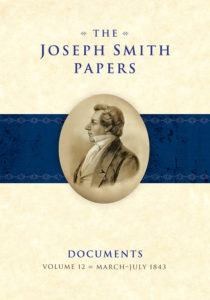
This volume of the Joseph Smith Papers contains 96 representative documents from the period of March – July 1841. During this time period, Joseph continued having legal problems with Missouri, the Kinderhook Plates were found, he led the Nauvoo Legion, construction continued on the Nauvoo House and temple, and he taught about the temple, eternal marriage, and plural marriage. Meanwhile Nauvoo continued to grow, and the church grew outside of Nauvoo and outside of the United States.
One document that I thought showed an interesting side of Joseph Smith’s personality was a response to a letter he had received from Abraham Jonas of Columbus, Illinois, asking to borrow a cannon. He wanted it for use in celebrating the failure of the establishment of a new county. Joseph’s response was to grant permission, along with a note at the end saying “Five hund[r]ed cannons you should have if I had them” (page 112).
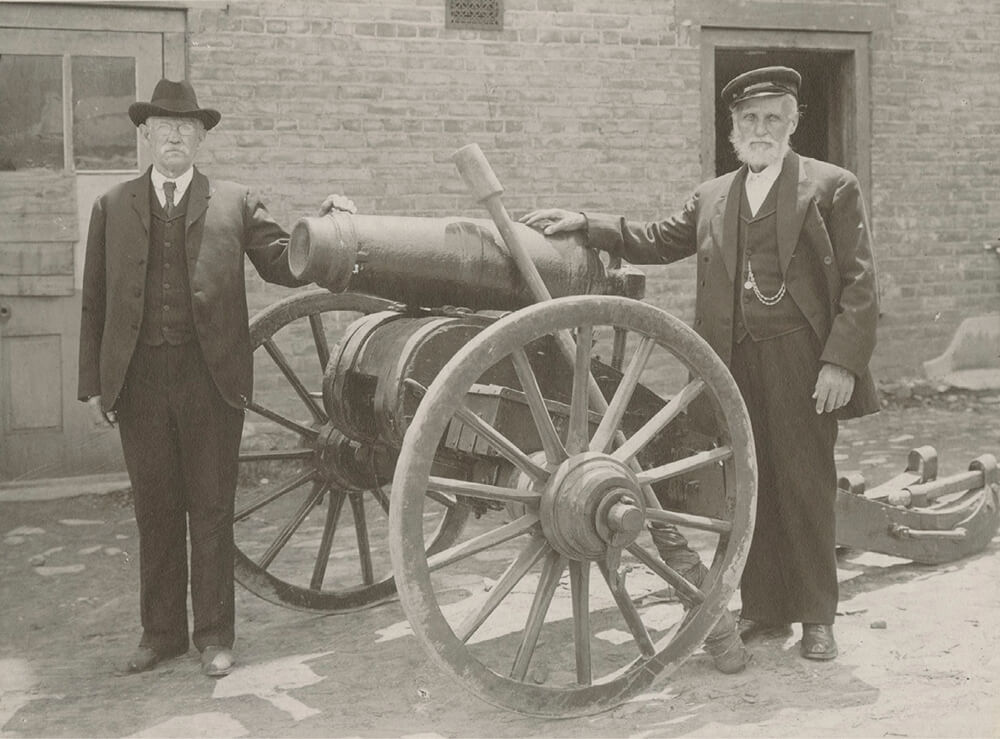
Joseph dealt with a couple of forgeries during this time period. One was a letter received that was supposed to appear as if it were written by the United States attorney general. It instructed Joseph to turn himself in to the Illinois governor for high treason, and he would then be tried by the United States Supreme Court. It threatened that if this didn’t happen, President John Tyler would have him arrested. The letter was recognized as a forgery since it was not in the handwriting of the attorney general and showed ignorance of legal procedure and federal court jurisdiction. It also was not postmarked, so was not mailed.
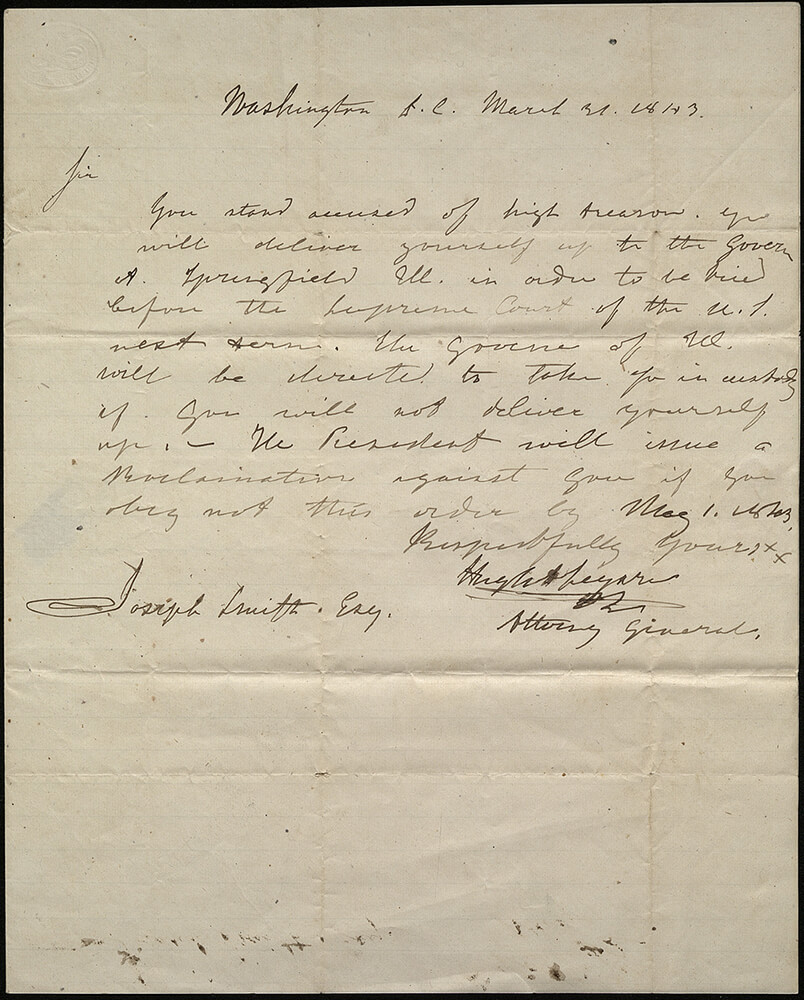
The other forgery was the Kinderhook Plates, though it was not known for sure that they were fake until 1980 (the finding was announced shortly thereafter in the Ensign magazine). A letter including a traced outline of one of the plates is included in this volume. The plates were manufactured and planted in a mound by men that were apparently attempting to trick local church members into accepting them as evidence of the Book of Mormon. The plates made their way to Joseph Smith, and although there are accounts that he made a brief preliminary attempt to translate them, there is no evidence that he had any further interest. (For more information, see the Church History Topic and Don Bradley’s 2011 FAIR Conference presentation.)
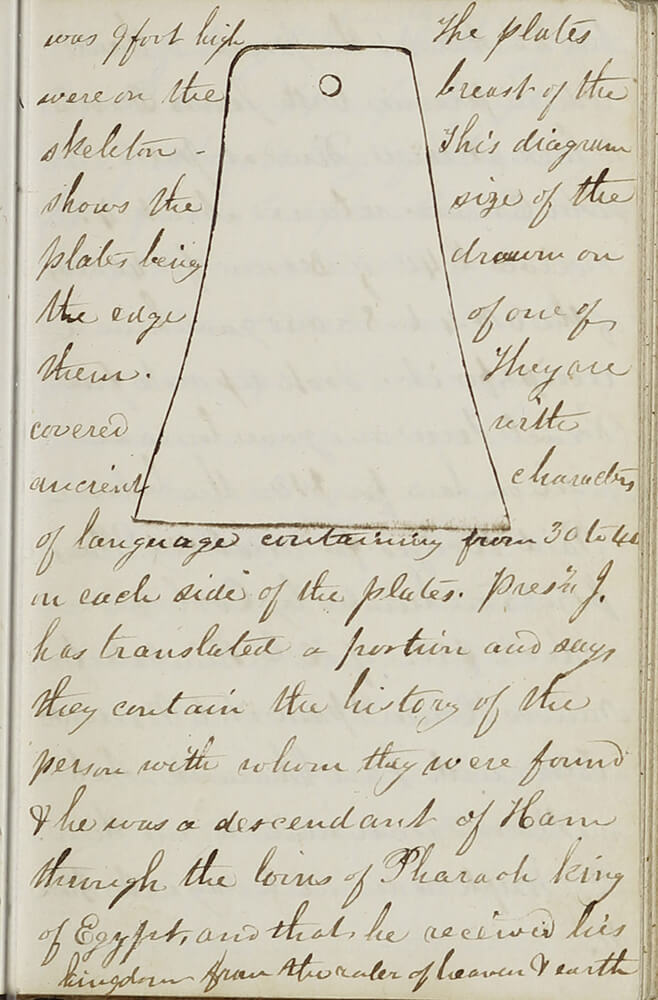
One of the discourses included is from June 11, 1843. Reports by Willard Richards, Wilford Woodruff, Franklin D. Richards, and James Burgess are given for comparison. “JS explained that the Saints’ salvation depended on gathering together and completing the temple – which was not progressing as quickly as he desired” (page 379). The discourse mentions the council in heaven, baptism of the dead to be done in the temple, spirit prison, the Godhead being made up of three personages, and the three degrees of glory.
In another discourse, given on the same day, he gave an account of his First Vision, as reported by Levi Richards: “Pres. J. Smith bore testimony to the same – saying that when he was a youth he began to think about these things but could not find out which of all the sects was right – he went into the grove & enquired of the Lord which of all the sects were right – he received for answer that none of them were right, that they were all wrong, & that the Everlasting gospel was broken – he said he understood the fulness of the Gospel from beginning to end – & could Teach it & also the order of the priesthood in all its ramifications – Earth & hell had opposed him & tryed to destroy him but they had not done it – & they <never would>” (pages 389-390).
A blessing to Sarah Ann Whitney, in Joseph’s handwriting, is one of the rare evidences of his plural marriages. Sarah was sealed to Joseph by her father, Newel K. Whitney, in 1842. On March 23, 1843, Joseph wrote her a blessing on stationery that he apparently received from the Whitney house. “This document, along with a select few other records likely important to the family, was isolated from that larger collection, suggestion that Sarah Ann, her mother, and other family members assigned those select documents a special status.”
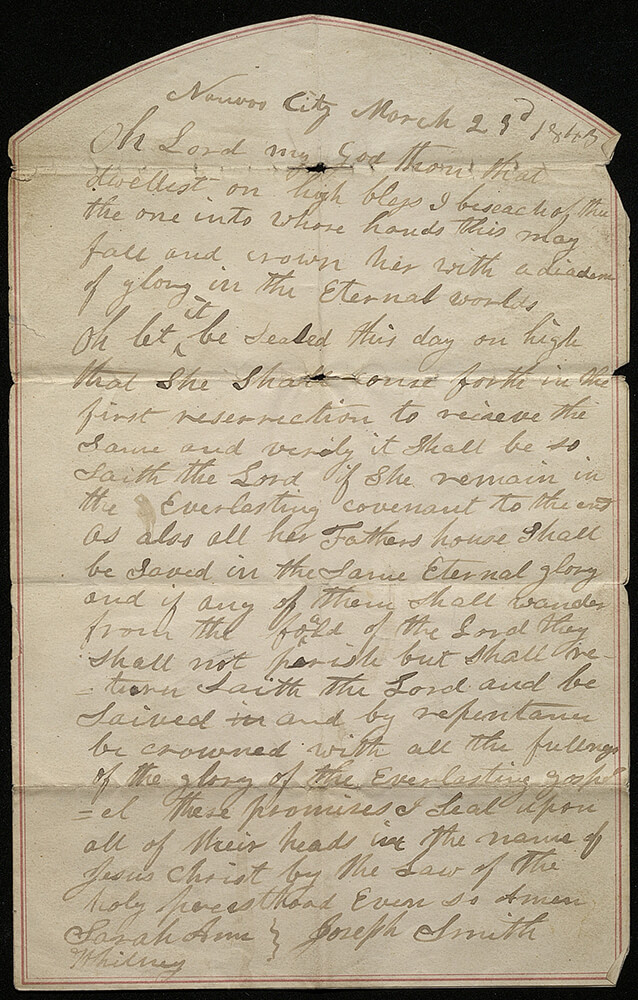
The revelation that became known as D&C 132 is included, along with a lengthy introduction explaining the circumstances and provenance. The original is no longer extant, apparently having been destroyed by Emma, but a copy made by Joseph Kingsbury either the day of or the day after the original was written has survived, and all other extant copies are based on it. It is the copy included here. “By the time JS dictated this July 1843 revelation, approximately seven legally married couples had each been sealed for eternity by priesthood authority, with JS serving as officiator in some of the sealings. In some instances, men were sealed to plural wives; in other instances, men were sealed by proxy to a deceased first wife as well as to a living wife; and in one case, the sealing of the couple took place following the plural marriage of their daughter.” Plural marriage and eternal marriage had been taught as distinct principles before and after this revelation, so the idea that the revelation has been reinterpreted after the cessation of plural marriage to also be talking about eternal marriage among monogamous couples is unfounded.
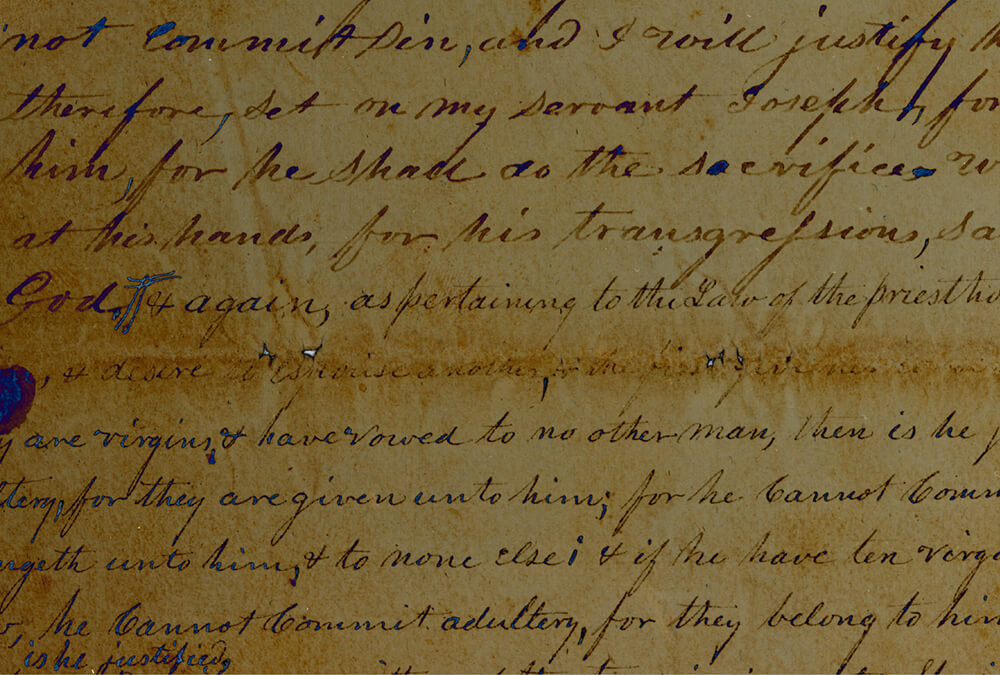
In fact, a discourse dated July 16, 1843, as reported by William Clayton, said in part, “He showed that a man must enter into an everlasting covenant with his wife in this world or he will have no claim on her in the next” (page 487). Franklin D. Richards’ report added, “Those who keep no eternal law in this life or make no eternal contract are single & alone in the eternal world (Luke 20-35) and are only made Angels to minister to those who shall be heirs of Salvation never becoming Sons of God having never kept the Law of God ie eternal Law The earthly is the image of the Heavenly shows that is by the multiplication of Lives that the eternal worlds are created and occupied that which is born of the flesh is flesh that which is born of the spirit is spirit” (page 488).
The only complaint I have about this volume is the overuse of references to the Adam Clarke Commentary on the Bible in the footnotes, usually accompanied by references to the work of Thomas A. Wayment and Haley Wilson-Lemmon. Wayment and Wilson-Lemmon attempted to show a reliance on Clarke’s commentary for some of Joseph Smith’s translation of the Bible. Kent P. Jackson has since shown this to be very unlikely, concluding that “The few overlaps that do exist are vague, superficial, and coincidental.” (See “Some Notes on Joseph Smith and Adam Clarke” published by The Interpreter Foundation.)
As with all of the Joseph Smith Papers volumes so far, this is excellent overall. Along with the documents themselves that are (or will be) available online, the additional contextual information, historical introductions, and study aids make the book invaluable to any student of church history or the life of Joseph Smith.
Additional resources on this volume from The Joseph Smith Papers team:
A “Poor Brother” Donates $2 for the Nauvoo Temple
Welcoming Immigrants to Nauvoo
Joseph Smith Prepares the Saints for the Temple
 Trevor Holyoak has been actively involved with FAIR for many years, received the John Taylor Defender of the Faith Award in 2014, and is the newly appointed Vice President. He graduated magna cum laude from Weber State University with a BS in computer science and now works as a programmer and systems administrator. He is currently serving as a stake emergency preparedness director and in the leadership of the Utah Valley Amateur Radio Club. He lives in Cedar Hills, Utah with his wife and their younger children.
Trevor Holyoak has been actively involved with FAIR for many years, received the John Taylor Defender of the Faith Award in 2014, and is the newly appointed Vice President. He graduated magna cum laude from Weber State University with a BS in computer science and now works as a programmer and systems administrator. He is currently serving as a stake emergency preparedness director and in the leadership of the Utah Valley Amateur Radio Club. He lives in Cedar Hills, Utah with his wife and their younger children.

Do we know why the JSPP people used the Wayment-Wilson-Lemmon theories regarding the Clark commentary if this volume you have just reviewed was still being prepared after their theories were shown by Jackson to be bogus?
That’s a great question, Dennis. I’m thinking perhaps the footnotes were already done before people had a chance to thoroughly consider Jackson’s paper?
It is interesting to note that the Church History Topic on the Joseph Smith Translation used to say “As he worked on these changes, he appears in many instances to have consulted respected commentaries by biblical scholars, studying them out in his mind as a part of the revelatory process.” ( https://web.archive.org/web/20201111222633/https://www.churchofjesuschrist.org/study/history/topics/joseph-smith-translation-of-the-bible?lang=eng ) The current version of the essay does not include this sentence. ( https://www.churchofjesuschrist.org/study/history/topics/joseph-smith-translation-of-the-bible?lang=eng)
> I’m thinking perhaps the footnotes were already done before people had a chance to thoroughly consider Jackson’s paper?
Just to update this, it has been confirmed that such is the case.